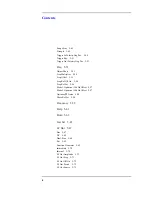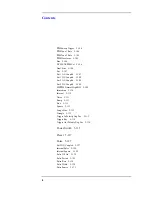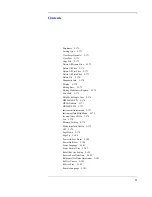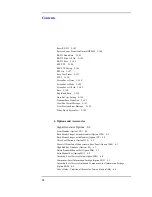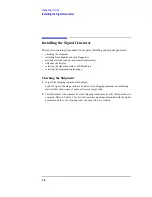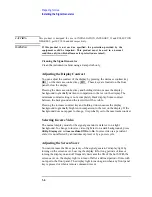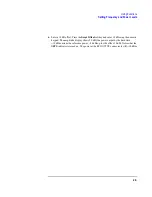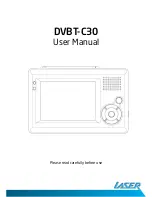
1-5
Preparing for Use
Installing the Signal Generator
Meeting Electrical and Environmental Requirements
Line Settings
CAUTION:
This product has an autoranging line voltage input. Be sure that the supply voltage is within
the specified range.
The available AC power source must meet the following requirements:
Voltage:
•
100/115 volts nominal (90-132 volt range)
•
230/240 volts nominal (198-254 volt range)
Frequency:
•
for 100/115 volts: 50/60/400 Hz nominal
•
for 230/240 volts: 50/60 Hz nominal
Power:
•
200 watts maximum
Verify that the power cable is not damaged and that the power source socket outlet
provides a protective earth contact.
WARNING
This is a Safety Class 1 Product (provided with a protective earthing ground
incorporated in the power cord). The mains plug shall only be inserted in a
socket outlet provided with a protective earth contact. Any interruption of
the protective conductor inside or outside of the product is likely to make the
product dangerous. Intentional interruption is prohibited.
CAUTION
Always use the three-prong AC power cord supplied with this product. Failure to
ensure adequate earth grounding by not using this cord may cause product
damage.
Environment
This product is designed for use in the following environmental conditions:
•
indoor use
•
< 15,000 feet (4,572 meters) altitude
•
0
°
to 55
°
C temperature, unless specified differently
•
maximum relative humidity 80% for temperatures up to 31
°
C, decreasing linearly to
50% relative humidity at 40
°
C
Summary of Contents for ESG Series
Page 3: ...ii ...
Page 29: ...1 12 Preparing for Use Verifying Signal Generator Operation ...
Page 43: ...2 14 Using Functions Saving and Recalling an Instrument State ...
Page 95: ...3 52 Troubleshooting HP Sales and Service Offices ...
Page 109: ...4 14 Front and Rear Panel Rear Panel Overview ...
Page 111: ...5 2 Hardkey and Softkey Reference ...
Page 135: ...5 26 Hardkey and Softkey Reference Ampl ...
Page 137: ...5 28 Hardkey and Softkey Reference Amplitude ...
Page 139: ...5 30 Hardkey and Softkey Reference Arrow Keys ...
Page 141: ...5 32 Hardkey and Softkey Reference Display Contrast Keys ...
Page 161: ...5 52 Hardkey and Softkey Reference FM ...
Page 169: ...5 60 Hardkey and Softkey Reference Frequency ...
Page 171: ...5 62 Hardkey and Softkey Reference Help ...
Page 173: ...5 64 Hardkey and Softkey Reference Hold ...
Page 175: ...5 66 Hardkey and Softkey Reference Incr Set ...
Page 195: ...5 86 Hardkey and Softkey Reference LF Out ...
Page 197: ...5 88 Hardkey and Softkey Reference Local ...
Page 199: ...5 90 Hardkey and Softkey Reference Mod On Off ...
Page 200: ...5 91 Hardkey and Softkey Reference Mode Mode This front panel key is reserved for future use ...
Page 201: ...5 92 Hardkey and Softkey Reference Mode ...
Page 203: ...5 94 Hardkey and Softkey Reference Numeric Keypad ...
Page 225: ...5 116 Hardkey and Softkey Reference Power Switch ...
Page 235: ...5 126 Hardkey and Softkey Reference Preset ...
Page 241: ...5 132 Hardkey and Softkey Reference Pulse ...
Page 245: ...5 136 Hardkey and Softkey Reference Recall ...
Page 247: ...5 138 Hardkey and Softkey Reference Return ...
Page 249: ...5 140 Hardkey and Softkey Reference RF On Off ...
Page 255: ...5 146 Hardkey and Softkey Reference Save ...
Page 275: ...5 166 Hardkey and Softkey Reference Sweep List ...
Page 311: ...6 10 Options and Accessories Upgrade and Retrofit Kits ...
Page 312: ...7 1 7 Operation This chapter is reserved for future use ...
Page 313: ...7 2 Operation ...
Page 322: ...8 9 Safety and Regulatory Declaration of Conformity Declaration of Conformity ...
Page 341: ...9 18 Specifications HP ESG Series Signal Generators Specifications ...


